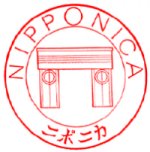____________________________________________________________________________________________________________________________________________________
Romanian version
____________________________________________________________________________________________________________________________________________________
E-mail: [email protected]
____________________________________________________________________________________________________________________________________________________
GENERAL OVERVIEW
___________________________________________________________________________________________________________________________________________________
What is "Nipponica"?
Nipponica Foundation became a representative
institution of the Romanian cultural life, focusing around such personalities
as members of the Romanian Academy, rectors, deans, university professors,
researchers, writers, artists, musicians, actors, various field specialists,
leaders of commercial institutions, businessmen, personalities of the public
life and many others.
Officially created in August 1990, "Nipponica"
propose to establish "an appropriate background in order to facilitate
the access to the Japanese culture and civilization in Romania and to make
known by all means, in Romania, the economic, scientific and cultural life
of Japan and of the Japanese people, as well as facilitating the access
to Romanian culture and civilization in Japan".
Today "Nipponica" has over 1000 members in Bucharest and more
than 10.000 members all over Romania, working up within the framework of
60 branches. Other branches are going to set up in the future.
How does "Nipponica" work?
Nipponica Foundation is working under the
direction of a council of 11 members and the following compartments:
- The Nipponica Society
- Publishing House "NIPPONICA"
- Editorial Office "NIPPONICA"
- Medical Research Center "NIPPONICAA"
- Office of Business Assistance "NIPPPONICA"
- Press Office "NIPPONICA"
>
- Cultural Tourism Office "NIPPONICAA"
- Cultural Center "NIPPONICA" <
- Research and Education Office "NIPPPONICA"
- Impresario Office "NIPPONICA";
- Data Bank "NIPPONICA"
- Publicity and Public Relations Office &"NIPPONICA"
- Conference and Exhibition Office ";NIPPONICA"
- Organizational Office "NIPPONICA&qquot;
- Creation and Creativity Office "NIIPPONICA"
Ahead the Council of Nipponica Foundation
is Mr. Paul Diaconu, the Executive President of the foundation. The Nipponica
Society is the main part of the "NIPPONICA" Foundation. The Honorary
President is supported by seven Vice-presidents and a Honorary Council set
up from 14 members of the Academy of Romania. The Nipponica Society is organized
in 30 sections.
At the beginning of 1992, two other organizations decided to join us. Thus,
the association "Friends of Japan" and the "Romanian Society
of Haiku" became associated (affiliated) to the Nipponica Foundation.
"Nipponica" in action
On the occasion of the Ceremony of the
Enthronement of His Majesty the Emperor Akihito (Sokuirei- Seiden- no- Gi),
Nipponica Foundation initiated the so called "Nipponica Decade"
including a Scientific Symposium dedicated to the "Eisei Era",
a Gala Spectacle at the Romanian Television Hall, fully transmitted on the
second channel of RTV, a spectacle called "Romanian Children are greeting
Japan" in the Children's Palace in Bucharest, a "Japanese Film
Gala", an "Evening of the Japanese Poetry", an "Evening
of the Kabuki Theatre", exhibitions about Japan, conferences and many
other activities.
In 1991, Nipponica offered to the
Romanian public a big number of opportunities to know more about Japan.
Here could be mentioned such activities as Conferences at the National Museum
of History, at the Popular University, and at the Cultural House of University
Students, Ukebana demonstrations, Japanese language courses, photo exhibitions,
and so on.
Many activities organized by Nipponica
took place to our branches from Tg. Mures ("The Spring Days",
"Japanese Cultural Days"), Oradea (exhibitions, Japanese language
courses), Brasov (Japanese language courses), Braila (exhibitions), Galati
(exhibitions), Arad (Origami exhibitions and courses) and so on.
A notable event was the publication of
the Nipponica periodical "Banzai", and the two-volume book "A
History of Japanse Literature" by Shuichi Kato. This seminal work was
translated into Romania by Kazuko Yamaguchi.
Recently, the International Association
of Communication and Exchanges from the City of Yokohama (YOKE) and Nipponica
Foundation have offered to over 4500 Bucharesters the opportunity to enjoy
a "Japanese Film Festival".
Also, at the "Arts Collection Museum",
the Yokohama Citizens Gallery and Nipponica Foundation, supported by the
Japanese Embassy in Bucharest, have displayed an exhibition of "Contemporary
Japanese Engraving and Photo". The exhibition was accompanied by a
friendly meeting between Japanese and Romanian artists.
Many times, Nipponica was honored by the
presence to our activities of His Excellency the Ambassador of Japan in
Bucharest, of various diplomats or members of the Japanese Community in
Romania.
The year 2002 represented the 100th
year since diplomatic relations were established between Japan and Romania.
By request of Ambassador MITSUHASHI Hidekata of the Japanese Embassy in
Romania, the Urasenke Society assisted with the program of special commemorative
events to celebrate this major milestone. From Kyoto, Urasenke Headquarters
dispatched two of its in-house chanoyu experts, SHIRAHASE Soko and FUSHIDA
Ayato, to take charge of the chanoyu events.
Providing invaluable local assistance were
the members of the Urasenke Tankokai Romania Association, led by the association's
president, Paul DIACONU. In the evening of April 10, they presented
a chanoyu program for the public at the Bucharest National Theatre. The
audience numbered more than 450, filling the theatre to capacity. Ten people
from the audience came up to the stage to be guests for a bowl of tea. In
the afternoon of April 11, they presented a chanoyu gathering for
invited dignitaries at the ambassador's official residence. Among the thirty
attendees was Her Majesty Queen Ana.
For the time being, Nipponica is preparing
in Bucharest and in countryside, to create many other opportunity, in order
to facilitate the access of Romanians to Japanese culture and civilization.
Paul Diaconu
The President of Nipponica Foundation

